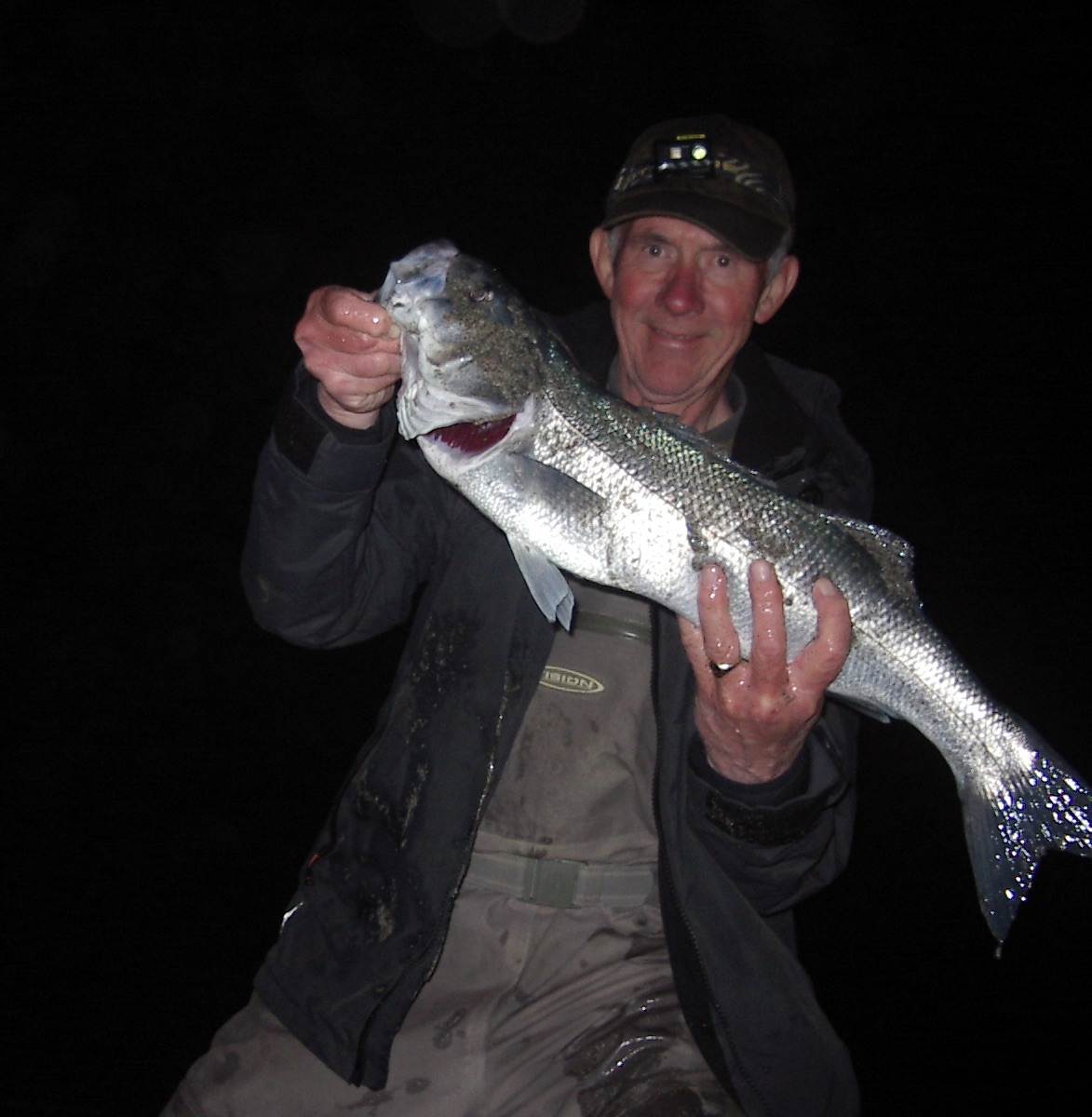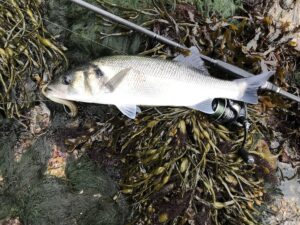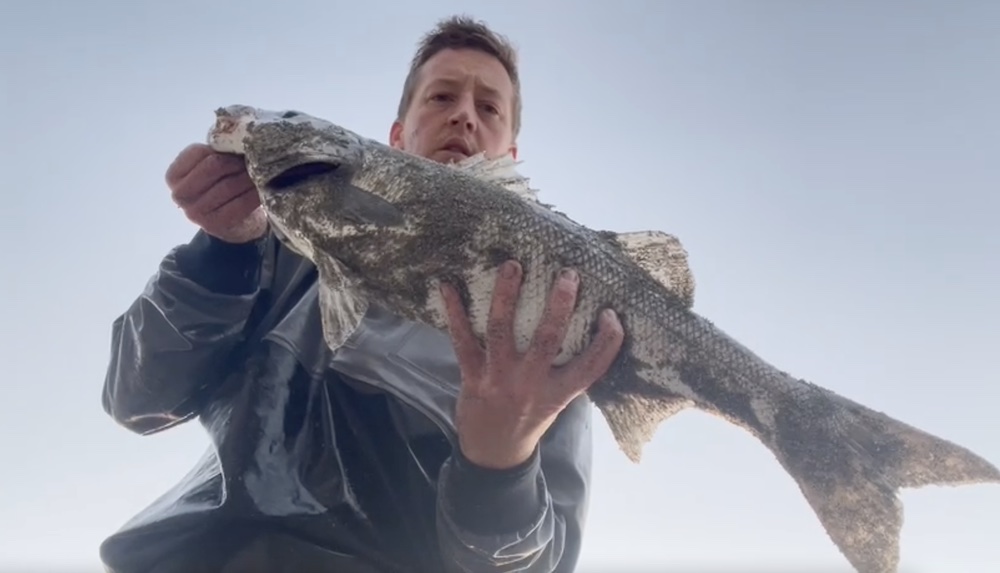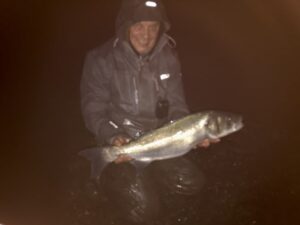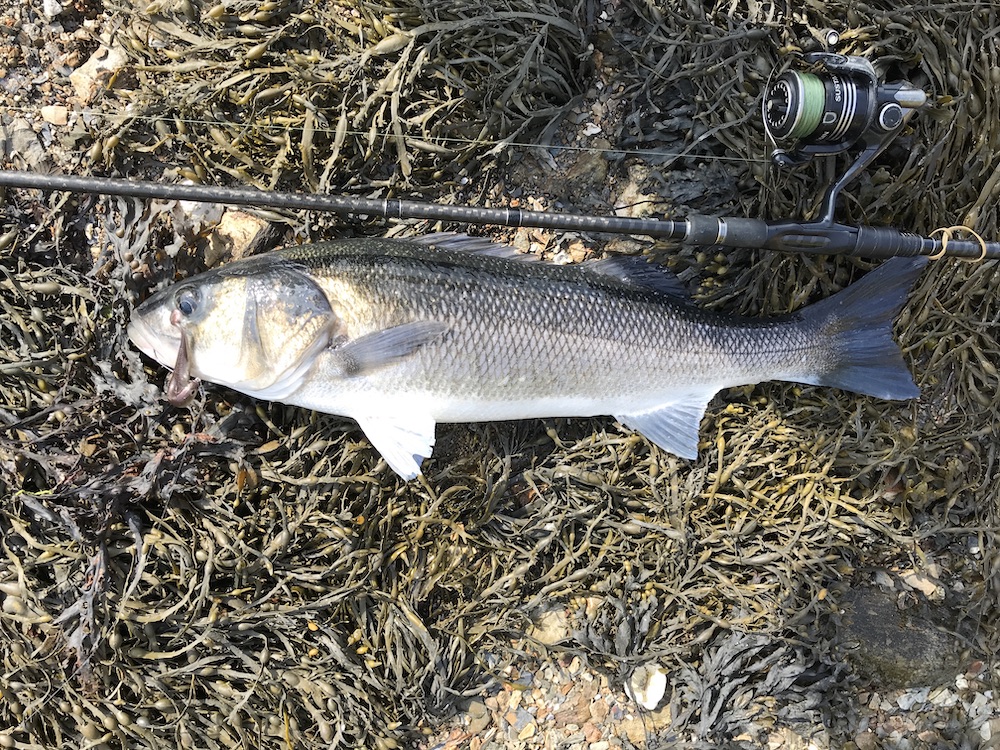I know many bass anglers get the winter blues at this time of year, having gone into fishing hibernation, and can’t wait for the new ‘season’ to start. They miss the enjoyment of fishing, and the many benefits to our physical and mental health it brings.
Tight Lines
I know only too well how fishing can help you deal with the stresses and strains of working life, and its healing powers when things go wrong. So when Justin Keight asked me to give a talk on bass fishing at the opening meeting of his great new venture, Tight Lines, I was very happy to help. Thank goodness people no longer feel ashamed or embarrassed to talk about mental health issues, and Justin’s new venture brings this new outlook to angling. I wish him and his colleagues well.
Recent catches
As most of you will be aware, January can be a mixed month on the bass. I have had some very good fishing just after New Year in the past, but not this year. I only managed three trips for the whole of the month, and a couple of blanks on the weekend of the 21st/22nd brought an end to proceedings for me, having yet to catch my first bass of 2023.
I didn’t hear of much else being caught in January either – except for my Guernsey mates, who had a great weekend’s fishing on the beautiful island of Herm. Bryn Le Poidevin bagged this near-7lber on bait while he was over there.

Mackerel (and anchovies) seemed to be around in prolific quantities in January. Surprisingly, this doesn’t seem to have resulted in large catches of bass by anglers – shore or boat. Mind you, I suspect that angling effort will have dropped away. The bass were around, as evidenced by the high level of commercial catches being made, but presumably not taking bait or lures, due to the presence of so much natural food in the water.
Fishing plans
2022 taught me not to be too prescriptive when it comes to making fishing plans for the year ahead. I couldn’t have foreseen the way that estuaries, and free-lining big baits opened up to me.
Sometimes it’s best just to see where things take you, and this year my plan is very simple – catch more fish. I want to be more focussed, and try to get the number of blank sessions down. But at the end of the day, you can be as focussed as you like – if the fish aren’t there you won’t catch them!
What plans have you got?
Bass off the top
Angling buddy Ben Harris has been trying out his new drone (what a great bit of kit!). Watch this awesome short video he’s produced showing a 60cm bass hitting a surface lure last summer. I’m looking forward to his next one.
What3words
I was lucky enough to receive a new iphone and a new watch for my birthday recently. The phone has a better camera than my last one did, so hopefully I’ll be able to take a few more ‘grip and grins’ of all the big fish I’m going to catch this year (I wish!). I’ve downloaded the what3words app so that I can give Angela bit more precise information about where I’m fishing (in case of emergency) than SWOSC (SomeWhere On the South Coast)! Thanks to Simon Willey for suggesting this.
More than just a timepiece
My new Garmin Instinct Solar watch is more than just a timepiece. Not only can I actually tell the time without my glasses on – even at night with its backlight function, it has all manner of useful functions. One very useful one is the GPS function. I can save the GPS coordinates of the bit of shoreline I’m fishing or exploring, and when I go back there in the dark, just press a button and it will take me back to within 5 yards of this. Awesome!
Like many tide tables, it will also tell me when sunrise and sunset are. But the really useful information it gives is the twilight time. This is the time when I would want to start fishing, just as the light is going (or coming if you fish early mornings). Usually about half an hour after sunset (or before sunrise).
I can even see the moon phase, and times of moonrise and set. According to the Solunar Theory, these correspond to ‘minor periods’ of increased fish activity which last for about an hour. ‘Major periods’, when the moon is directly overhead (lunar transit) or below our feet (opposing lunar transit), are thought to be when fish activity is greatest, and last for about two hours. The times of moonrise and set are about 12 hours apart, with the lunar transits falling roughly halfway between these.
Sickening
That’s how people described the death of seabirds trapped in a gill net left on a Cornish beach.

Rather ironically, the net was found in a Special Protection Area for overwintering birds. Tragically, there were also a number of dead cetaceans, showing signs of having been caught in nets, recorded in this area in January. I recorded this young common dolphin for the Marine Strandings Network at a neighbouring beach a few days earlier.

Of course we can’t be sure which fishery is responsible for this, but reports from this area seem to have slowed since the commercial bass ban came in on February 1st.
This net was presumably set to catch bass, even though it is currently illegal to target them with nets. It’s unclear if the net was set where it was found (as opposed to being washed in), but if it was it would have been illegal, since in this area (this doesn’t apply to all areas) net headlines must be at least 3m below the surface at any state of the tide.
Every year we see tonnes and tonnes of pre-spawning bass being landed around Cornwall (many of which are likely to be first-time spawners) during the late autumn and winter. Depriving these fish of the chance to reproduce and replenish stocks, is short-sighted folly. As an angling friend and fellow bass researcher put it “it’s a bit like a farmer killing all his cows just before they calf”. Let’s hope the Bass Fisheries Management Plan (due out later this year) can do something about this.
Supper for science
That’s the theme for a new research project which the Bass Anglers Sportfishing Society are helping the University of Essex with. The project aims to discover where the bass we catch were born and grow up, so that the most productive nursery areas can be better protected, and the less productive ones can be restored. Ultimately this should lead to the increased recruitment of bass to the adult spawning stock, and better bass stocks.
With the kind permission of David Mitchell, I can share this article about the scheme The Appliance of Science 32-33 BASS 619_JH which appeared in the latest issue of Sea Angler magazine.
The more people that can help, the better. So whether you target bass, or catch a few when you’re fishing for other species, and keep the odd one or two for the table, please contact the university by emailing seabasstastic@gmail.com. You’ll just need to keep the head(s) in a bag in the freezer, ready for collection. All anglers are welcome.
That’s all for this month folks.
Tight lines,
![]()


